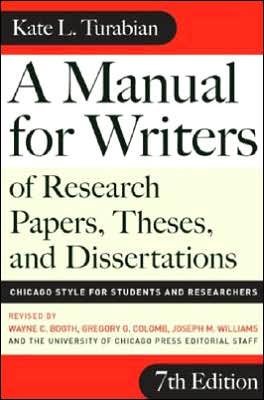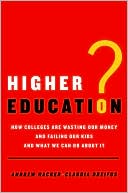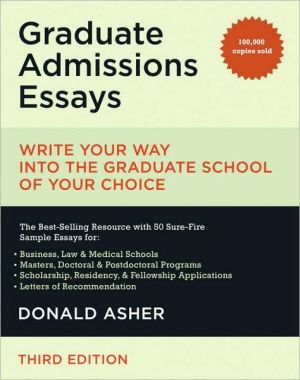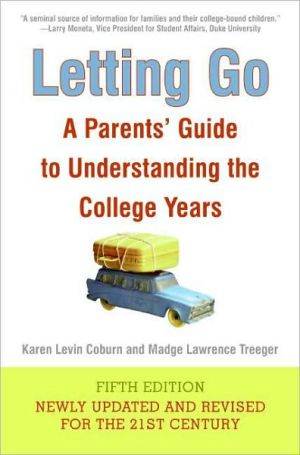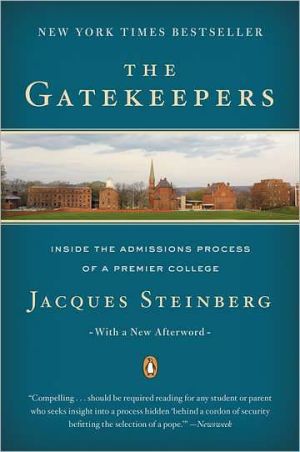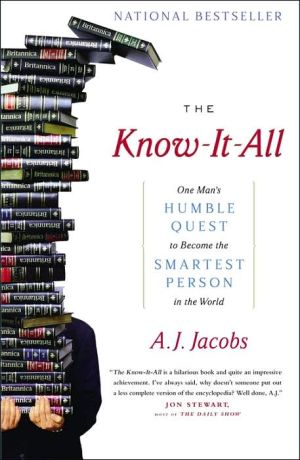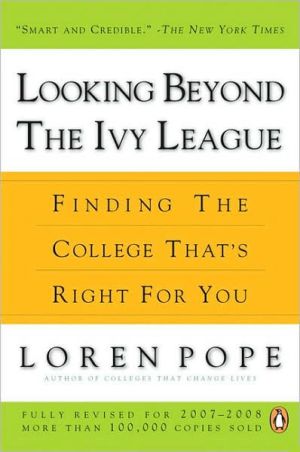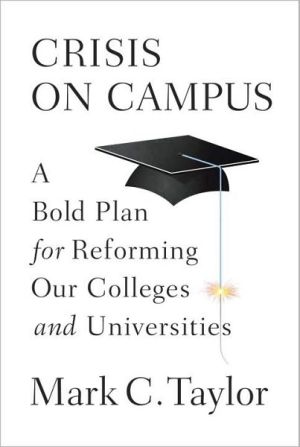A Manual for Writers of Research Papers, Theses, and Dissertations: Chicago Style for Students and Researchers
Dewey. Bellow. Strauss. Friedman. The University of Chicago has been the home of some of the most important thinkers of the modern age. But perhaps no name has been spoken with more respect than Turabian. The dissertation secretary at Chicago for decades, Kate Turabian literally wrote the book on the successful completion and submission of the student paper. Her Manual for Writers of Research Papers, Theses, and Dissertations, created from her years of experience with research projects across...
Search in google:
Dewey. Bellow. Strauss. Friedman. The University of Chicago has been the home of some of the most important thinkers of the modern age. But perhaps no name has been spoken with more respect than Turabian. The dissertation secretary at Chicago for decades, Kate Turabian literally wrote the book on the successful completion and submission of the student paper. Her Manual for Writers of Research Papers, Theses, and Dissertations, created from her years of experience with research projects across all fields, has sold more than seven million copies since it was first published in 1937. Now, with this seventh edition, Turabian’s Manual has undergone its most extensive revision, ensuring that it will remain the most valuable handbook for writers at every level—from first-year undergraduates, to dissertation writers apprehensively submitting final manuscripts, to senior scholars who may be old hands at research and writing but less familiar with new media citation styles. Gregory G. Colomb, Joseph M. Williams, and the late Wayne C. Booth—the gifted team behind The Craft of Research—and the University of Chicago Press Editorial Staff combined their wide-ranging expertise to remake this classic resource. They preserve Turabian’s clear and practical advice while fully embracing the new modes of research, writing, and source citation brought about by the age of the Internet.Booth, Colomb, and Williams significantly expand the scope of previous editions by creating a guide, generous in length and tone, to the art of research and writing. Growing out of the authors’ best-selling Craft of Research, this new section provides students with an overview of every step of the research and writing process, from formulating the right questions to reading critically to building arguments and revising drafts. This leads naturally to the second part of the Manual for Writers, which offers an authoritative overview of citation practices in scholarly writing, as well as detailed information on the two main citation styles (“notes-bibliography” and “author-date”). This section has been fully revised to reflect the recommendations of the fifteenth edition of The Chicago Manual of Style and to present an expanded array of source types and updated examples, including guidance on citing electronic sources.The final section of the book treats issues of style—the details that go into making a strong paper. Here writers will find advice on a wide range of topics, including punctuation, table formatting, and use of quotations. The appendix draws together everything writers need to know about formatting research papers, theses, and dissertations and preparing them for submission. This material has been thoroughly vetted by dissertation officials at colleges and universities across the country.This seventh edition of Turabian’s Manual for Writers of Research Papers, Theses, and Dissertations is a classic reference revised for a new age. It is tailored to a new generation of writers using tools its original author could not have imagined—while retaining the clarity and authority that generations of scholars have come to associate with the name Turabian. CHOICE “The highlight of this seventh edition is the expanded focus of the book. [A] new section titled ‘Research and Writing: From Planning to Production’ provides a step-by-step process for conducting research. . . . It will be most beneficial to those new to research and writing, but it does provide a nice refresher for those familiar with the processes. . . . An extensive bibliography and detailed index round out this well-known reference work.”—J.M. Piper-Burton, Choice — J.M. Piper-Burton
A Manual for Writers of Research Papers, Theses, and Dissertations Chicago Style for Students and Researchers \ By Kate L. Turabian \ The University of Chicago Press Copyright © 2007 The University of Chicago\ All right reserved.\ ISBN: 978-0-226-82337-9 \ \ \ \ Chapter One What Research Is and How Researchers Think about It\ 1.1 How Researchers Think about Their Aims 1.2 Three Kinds of Questions That Researchers Ask 1.2.1 Conceptual Questions: What Should We Think? 1.2.2 Practical Questions: What Should We Do? 1.2.3 Applied Questions: What Must We Understand before We Know What to Do? 1.2.4 Choosing the Right Kind of Question 1.2.5 The Special Challenge of Conceptual Questions: Answering So What?\ You do research every time you ask a question and look for facts to answer it, whether the question is as simple as finding a plumber or as profound as discovering the origin of life. When only you care about the answer or when others need just a quick report of it, you probably won't write it out. But you must report your research in writing when others will accept your claims only after they study how you reached them. In fact, reports of research tell us most of what we can reliably believe about our world-that once there were dinosaurs, that germs cause disease, even that the earth is round.\ You may think your report will add little to the world's knowledge. Maybe so. But done well, it will add a lot to yours and to your ability to do the next report. You may also think that your future lies not in scholarly research but in business or a profession. But research is as important outside the academy as in, and in most ways it is the same. So as you practice the craft of academic research now, you prepare yourself to do research that one day will be important at least to those you work with, perhaps to us all.\ As you learn to do your own research, you also learn to use-and judge-that of others. In every profession, researchers must read and evaluate reports before they make a decision, a job you'll do better only after you've learned how others will judge yours. This book focuses on research in the academic world, but every day, we read or hear about research that can affect our lives. Before we believe those reports, though, we must think about them critically to determine whether they are based on evidence and reasoning that we can trust.\ To be sure, we can reach good conclusions in ways other than through reasons and evidence: we can rely on tradition and authority or on intuition, spiritual insight, even on our most visceral emotions. But when we try to explain to others not just why we believe our claims but why they should too, we must do more than just state an opinion and describe our feelings.\ That is how a research report differs from other kinds of persuasive writing: it must rest on shared facts that readers accept as truths independent of your feelings and beliefs. They must be able to follow your reasoning from evidence that they accept to the claim you draw from it. Your success as a researcher thus depends not just on how well you gather and analyze data, but on how clearly you report your reasoning so that your readers can test and judge it before making your claims part of their knowledge and understanding.\ 1.1 How Researchers Think about Their Aims\ All researchers gather facts and information, what we're calling data. But depending on their aims and experience, they use those data in different ways. Some researchers gather data on a topic-stories about the Battle of the Alamo, for example-just to satisfy a personal interest (or a teacher's assignment).\ Most researchers, however, want us to know more than just facts. So they don't look for just any data on a topic; they look for specific data that they can use as evidence to test and support an answer to a question that their topic inspired them to ask, such as Why has the Alamo story become a national legend?\ Experienced researchers, however, know that they must do more than convince us that their answer is sound. They must also show us why their question was worth asking, how its answer helps us understand some bigger issue in a new way. If we can figure out why the Alamo story has become a national legend, we might then answer a larger question: How have regional myths shaped our national character?\ You can judge how closely your thinking tracks that of an experienced researcher by describing your project in a sentence like this:\ 1. I am working on the topic of X (stories about the Battle of the Alamo),\ 2. because I want to find out Y (why its story became a national legend),\ 3. so that I can help others understand Z (how such regional myths have shaped our national character).\ That sentence is worth a close look because it describes not just the progress of your research but your personal growth as a researcher.\ 1. "I am working on the topic of ..." Researchers often begin with a simple topic like the Battle of the Alamo, either because it was assigned, because something about it puzzles them, or because it merely sparks an interest. But inexperienced researchers too often stop there, leaving themselves with nothing but a topic to guide their work. They mound up hundreds of notes, but have no way to decide what data to keep and what to discard. When it comes time to write, they dump everything into a report that reads like a grab bag of random facts. If those facts are new to readers who happen to be interested in the topic, they might read the report. But even those readers will want to know what those facts add up to. 2. "... because I want to find out how or why ..." More experienced researchers usually begin not with just a topic but with a research question, such as Why has the story of the Alamo become a national legend? And they know that readers will think their facts add up to something only when those facts serve as evidence to support its answer. Indeed, only with a question can a researcher know which facts to look for and which to keep-not just those that support an answer, but also those that test or even discredit it. When he thinks he has enough evidence to support his answer and can respond to data that seem to contradict it, he writes a report first to test his own thinking, then to share his answer with others so that they can test it too.\ 3. "... so that I can help others understand ..." The most successful researchers, however, realize that readers want to know not only that an answer is sound but why the question was worth asking. So they anticipate that readers will ask a question of their own: So what? Why should I care why the Alamo story has become a legend? That So what? can vex even the most experienced researcher, but every researcher must try to answer it before it's asked: If we can find that out, we might better understand the bigger question of how such stories shape our national character.\ But a shrewd researcher doesn't stop there. She anticipates her readers' asking So what? again by looking for another, still larger answer: And if we can understand what has shaped our national character, we might understand better who we Americans think we are. And before you ask, when we know that, we might better understand why others in the world judge us as they do. The most successful researchers know that readers care about a question only when they think that its answer might encourage them to say not So what? but That's worth knowing!\ In short, not all questions are equally good. We might ask how many cats slept in the Alamo the night before the battle, but so what if we find out? It is hard to see how an answer would help us think about any larger issue worth understanding, so it's a question that's probably not worth asking (though as we'll see, we could be wrong about that).\ 1.2 Three Kinds of Questions That Researchers Ask\ Experienced researchers also know that different readers expect them to ask and answer different kinds of questions. The most common questions in academic work are conceptual. The ones most common in the professions are practical.\ 1.2.1 Conceptual Questions: What Should We Think?\ A question is conceptual when your answer to So what? doesn't tell readers what to do, but helps them understand some issue:\ 1. I am working on the topic of X,\ 2. because I want to find out how/why/whether Y, (So what if you do?)\ 3. so that I can help others understand how/why/whether Z.\ If you were explaining your research, the conversation might go like this:\ I'm working on the topic of risk evaluation.\ Why?\ Because I want to find out how ordinary people evaluate the risk that they will be hurt by terrorism.\ So what if you do?\ Once I do, we might better understand the bigger question of how emotional and rational factors interact to influence the way ordinary thinkers think about risk.\ Researchers in the humanities and the social and natural sciences work mostly on conceptual questions, such as How did Shakespeare's political environment influence his plays? What caused the extinction of most large North American mammals? What are comets made of? The answers to those questions don't tell us how to change the world, but they do help us understand it better.\ To be sure, the answer to a conceptual question often turns out to be unexpectedly relevant to solving a practical problem. And before we can solve any important practical problem, we usually must do conceptual research to understand it better. But in most of the academic world, the primary aim of most researchers is only to improve our understanding.\ 1.2.2 Practical Questions: What Should We Do?\ You pose a different kind of question-call it a practical one-when your answer to So what? tells readers what to do to change or fix some troublesome or at least improvable situation:\ 1. I am working on the topic of X,\ 2. because I want to find out Y, (So what if you do?)\ 3. so that I can tell readers what to do to fix/improve Z.\ You would explain your work on a practical question like this:\ I'm working on the topic of communicating risk effectively.\ Why?\ Because I want to find out what psychological factors cause ordinary Americans to exaggerate their personal risk from a terrorist attack.\ So what if you do?\ Then I can tell the government how to counteract those factors when they communicate with the public about the real risk of terrorism.\ Practical questions are most common outside the academic world, especially in business. In academic fields such as health care and engineering, researchers sometimes ask practical questions, but more often they ask a third kind of question that's neither purely practical nor purely conceptual: call it an applied research question.\ 1.2.3 Applied Questions: What Must We Understand before We Know What to Do?\ Often, we know we must do something to solve a practical problem, but before we can know what that is, we must do research to understand the problem better. We can call that kind of research applied. With this middle kind of question, the third step raises a question whose answer is not the solution to a practical problem, but only a step toward it.\ I want to find out how Americans have changed their daily lives in response to the terrorist attacks on 9/11.\ So what if you do?\ Then we can understand the psychological factors that cause ordinary Americans to exaggerate their personal risk from a terrorist attack.\ So what if you do?\ Then we can understand how to reduce the effects of those psychological factors.\ So what if you do?\ Then perhaps the government can use that information to communicate more effectively the real risk from terrorism.\ Applied questions are common in academic fields such as business, engineering, and medicine and in companies and government agencies that do research to understand what must be known before they can solve a problem.\ 1.2.4 Choosing the Right Kind of Question\ Some new researchers dislike purely conceptual research questions because they think they're too "theoretical" or irrelevant to the "real" world. So they try to cobble an implausible practical use onto a conceptual answer: When we know how race shaped the political impact of the Alamo stories, we can understand how racism has been used to foster patriotism and thereby eliminate racist appeals to patriotism in relation to conflicts in the Middle East.\ That impulse is understandable. But unless you've been assigned an applied or practical problem, resist it. You are unlikely to solve any significant practical problem in a class paper, and in any case, most of the academic world sees its mission not as fixing the problems of the world directly, but as understanding them better (which may or may not help fix them).\ 1.2.5 The Special Challenge of Conceptual Questions: Answering So What?\ With most practical questions, we don't have to answer So what? because the benefit is usually obvious. Even most applied questions imply the practical benefits of their answers: few readers would question why a researcher is trying to understand what causes Alzheimer's. With conceptual questions, however, the answer to So what? is often not obvious at all, even to an experienced researcher: So what if Shakespeare had Lady Macbeth die off stage rather than on? So what if some cultures use masks in their religious rituals and others don't? Why is it important to know that?\ For a research paper in an introductory course, your instructor may be satisfied with any plausible answer to So what? So if early in your research career you find yourself struggling with that question, don't take it as a sign of failure, much less as evidence that you're not ready to do the work. In fact, you might not discover the answer to So what? until you've drafted your report, maybe not even until you've finished it. And even then, maybe the answer will matter only to you.\ But if your project is a thesis or dissertation, it's not just an advisor that you have to satisfy. Your answer must also satisfy those in your field (represented by your advisor) who will judge your work not just by the quality of your answer, but by the significance of your question. Experienced researchers know that some readers, perhaps many, will read their report and think I don't agree. They accept that as an inevitable part of sharing research on significant issues. What they can't accept is I don't care.\ So as hard as it will be, the more often you imagine others asking So what? and the more often you try to answer it, if only to your own satisfaction, the more confident you can be that eventually you'll learn to succeed at every experienced researcher's toughest task-to convince your readers that your report is worth their time. (In chapter 10, we discuss how to write an introduction that motivates your readers at least to start reading your report.)\ Chapter Two Moving from a Topic to a Question to a Working Hypothesis\ 2.1 Find a Question in Your Topic 2.1.1 Search Your Interests 2.1.2 Make Your Topic Manageable 2.1.3 Question Your Topic 2.1.4 Evaluate Your Questions\ 2.2 Propose Some Working Answers 2.2.1 Decide on a Working Hypothesis 2.2.2 Beware the Risks in a Working Hypothesis 2.2.3 If You Can't Find an Answer, Argue for Your Question\ 2.3 Build a Storyboard to Plan and Guide Your Work 2.3.1 State Your Question and Working Hypotheses 2.3.2 State Your Reasons 2.3.3 Sketch in the Kind of Evidence You Should Look For 2.3.4 Look at the Whole\ 2.4 Organize a Writing Support Group\ A research project is more than collecting data. You start it before you log on to the Internet or head for the library, and you continue it long after you have all the data you think you need. In that process, you face countless specific tasks, but they all aim at just five general goals. You must do the following:\ * Ask a question worth answering.\ * Find an answer that you can support with good reasons.\ * Find reliable evidence to support your reasons.\ * Draft a report that makes a good case for your answer.\ * Revise that draft until readers will think you met the first four goals.\ You might even post those five goals in your workspace.\ Research projects would be easy if you could march straight through those steps. But as you've discovered (or soon will), research and its reporting are never straightforward. As you do one task, you'll have to look ahead to others or revisit an earlier one. You'll change topics as you read, search for more data as you draft, perhaps even discover a new question as you revise. Research is looping, messy, and unpredictable. But it's manageable if you have a plan, even when you know you'll depart from it.\ (Continues...)\ \ \ \ Excerpted from A Manual for Writers of Research Papers, Theses, and Dissertations by Kate L. Turabian Copyright © 2007 by The University of Chicago. Excerpted by permission.\ All rights reserved. No part of this excerpt may be reproduced or reprinted without permission in writing from the publisher.\ Excerpts are provided by Dial-A-Book Inc. solely for the personal use of visitors to this web site.\
A Note to Students xiPreface xiiiAcknowledgements xviiResearch and Writing: From Planning to Production Wayne C. Booth Gregory G. Colomb Joseph M. WilliamsOverview of Part I 3What Research Is and How Researchers Think about It 5How Researchers Think about Their AimsThree Kinds of Questions That Researchers AskMoving from a Topic to a Question to a Working Hypothesis 12Find a Question in Your TopicPropose Some Working AnswersBuild a Storyboard to Plan and Guide Your WorkOrganize a Writing Support GroupFinding Useful Sources 24Understand the Kinds of Sources Readers Expect You to UseRecord Your Sources Fully, Accurately, and AppropriatelySearch for Sources SystematicallyEvaluate Sources for Relevance and ReliabilityLook beyond the Usual Kinds of ReferencesEngaging Sources 36Read Generously to Understand, Then Critically to Engage and EvaluateTake Notes SystematicallyTake Useful NotesWrite as You ReadReview Your ProgressManage Moments of Normal PanicPlanning Your Argument 48What a Research Argument Is and Is NotBuild Your Argument around Answers to Readers' QuestionsTurn Your Working Hypothesis into a ClaimAssemble the Elements of Your ArgumentDistinguish Arguments Based on Evidence from Arguments Based on WarrantsAssemble an ArgumentPlanning a FirstDraft 62Avoid Unhelpful PlansCreate a Plan That Meets Your Readers' NeedsFile Away LeftoversDrafting Your Report 71Draft in the Way That Feels Most ComfortableDevelop Productive Drafting HabitsUse Your Key Terms to Keep Yourself on TrackQuote, Paraphrase, and Summarize AppropriatelyIntegrate Quotations into Your TextUse Footnotes and Endnotes JudiciouslyInterpret Complex or Detailed Evidence before You Offer ItBe Open to SurprisesGuard against Inadvertent PlagiarismGuard against Inappropriate AssistanceWork through Chronic Procrastination and Writer's BlockPresenting Evidence in Tables and Figures 82Choose Verbal or Visual RepresentationsChoose the Most Effective GraphicDesign Tables and FiguresCommunicate Data EthicallyRevising Your Draft 98Check Your Introduction, Conclusion, and ClaimMake Sure the Body of Your Report Is CoherentCheck Your ParagraphsLet Your Draft Cool, Then Paraphrase ItWriting Your Final Introduction and Conclusion 102Draft Your Final IntroductionDraft Your Final ConclusionWrite Your Title LastRevising Sentences 109Focus on the First Seven or Eight Words of a SentenceDiagnose What You ReadChoose the Right WordPolish It OffGive It Up and Print It OutLearning from Your Returned Paper 120Find General Principles in Specific CommentsTalk to Your InstructorPresenting Research in Alternative Forums 122Plan Your Oral PresentationDesign Your Presentation to Be Listened ToPlan Your Poster PresentationPlan Your Conference ProposalOn the Spirit of Research 129Source CitationGeneral Introduction to Citation Practices 133Reasons for Citing Your SourcesThe Requirements of CitationTwo Citation StylesCitation of Electronic SourcesPreparation of CitationsA Word on Citation SoftwareNotes-Bibliography Style: The Basic Form 141Basic PatternsBibliographiesNotesShort Forms for NotesNotes-Bibliography Style: Citing Specific Types of Sources 160BooksJournal ArticlesMagazine ArticlesNewspaper ArticlesAdditional Types of Published SourcesUnpublished SourcesInformally Published Electronic SourcesSources in the Visual and Performing ArtsPublic DocumentsOne Source Quoted in AnotherParenthetical Citations-Reference List Style: The Basic Form 216Basic PatternsReference ListsParenthetical CitationsParenthetical Citations-Reference List Style: Citing Specific Types of Sources 227BooksJournal ArticlesMagazine ArticlesNewspaper ArticlesAdditional Types of Published SourcesUnpublished SourcesInformally Published Electronic SourcesSources in the Visual and Performing ArtsPublic DocumentsOne Source Quoted in AnotherStyleSpelling 283PluralsPossessivesCompounds and Words Formed with PrefixesLine BreaksPunctuation 295PeriodCommaSemicolonColonQuestion MarkExclamation PointHyphen and DashesParentheses and BracketsSlashesQuotation MarksMultiple Punctuation MarksNames, Special Terms, and Titles of Works 308NamesSpecial TermsTitles of WorksNumbers 318Words or Numerals?Plurals and PunctuationDate SystemsNumbers Used outside the TextAbbreviations 331General PrinciplesNames and TitlesGeographical TermsTime and DatesUnits of MeasureThe Bible and Other Sacred WorksAbbreviations in Citations and Other Scholarly ContextsQuotations 347Quoting Accurately and Avoiding PlagiarismIncorporating Quotations into Your TextModifying QuotationsTables and Figures 359General IssuesTablesFiguresPaper Format and Submission 373General Format RequirementsFormat Requirements for Specific ElementsSubmission RequirementsBibliography 409Authors 437Index 439
\ CHOICE - J.M. Piper-Burton\ “The highlight of this seventh edition is the expanded focus of the book. [A] new section titled ‘Research and Writing: From Planning to Production’ provides a step-by-step process for conducting research. . . . It will be most beneficial to those new to research and writing, but it does provide a nice refresher for those familiar with the processes. . . . An extensive bibliography and detailed index round out this well-known reference work.”\ \ \ \ \ \ Technical Communication - David Kowalsky\ "This book has a great deal of potential for crossover use to technical communicators who work outside academia. This is especially true because there are still technical communicators who are in areas where they are still required to write formal reports. . . . Booth and colleagues have successfully revised the content of the seventh edition to better reflect the reality of how students research and write papers in the Internet age."\ \ \ \ CHOICEThe highlight of this seventh edition is the expanded focus of the book. [A] new section titled ‘Research and Writing: From Planning to Production’ provides a step-by-step process for conducting research. . . . It will be most beneficial to those new to research and writing, but it does provide a nice refresher for those familiar with the processes. . . . An extensive bibliography and detailed index round out this well-known reference work.”\ — J.M. Piper-Burton\ \ \ \ \ \ Technical Communication"This book has a great deal of potential for crossover use to technical communcators who work outside academia. This is especially true because there are still technical communicators who are in areas where they are still required to write formal reports. . . . Booth and colleagues have successfully revised the content of the seventh edition to better reflect the reality of how students research and write papers in the Internet age."\ — David Kowalsky\ \ \
